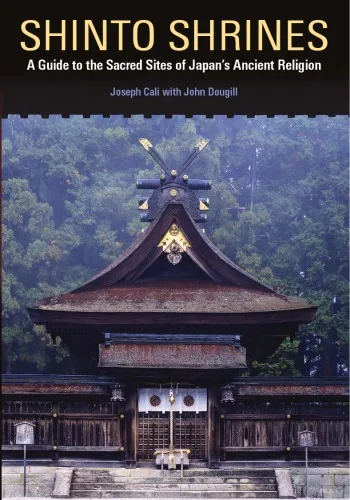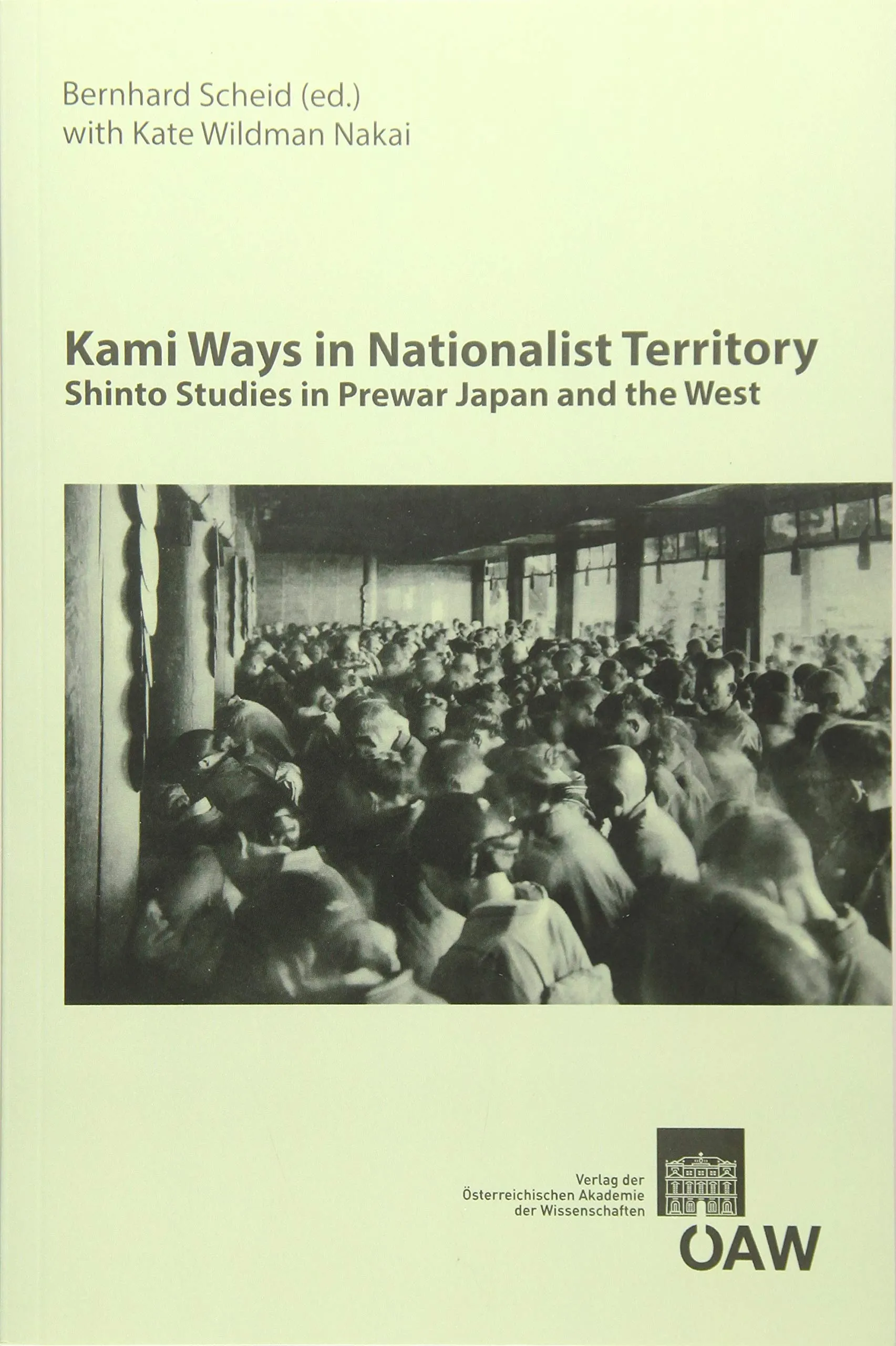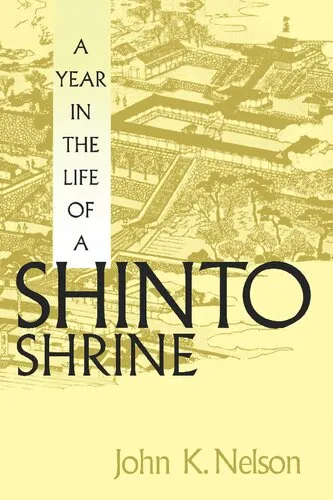Shinto: At the Fountainhead of Japan
2.5
بر اساس نظر کاربران

شما میتونید سوالاتتون در باره کتاب رو از هوش مصنوعیش بعد از ورود بپرسید
هر دانلود یا پرسش از هوش مصنوعی 2 امتیاز لازم دارد، برای بدست آوردن امتیاز رایگان، به صفحه ی راهنمای امتیازات سر بزنید و یک سری کار ارزشمند انجام بدینکتاب های مرتبط:
کتاب 'Shinto: At the Fountainhead of Japan' نوشته ژان هربرت یکی از جامعترین آثار درباره دین و فلسفه شینتو در ژاپن است. این کتاب به بررسی عمیق تاریخ، اساطیر، و جهانبینی این دین بومی میپردازد و نقشی که در شکلدهی فرهنگ و هویت ژاپنیها داشته است، مورد بررسی قرار میدهد.
خلاصهای جامع از کتاب
این کتاب به پنج بخش اصلی تقسیم میشود که هر یک از جنبههای مختلف شینتو را روشن میکنند. بخش اول درباره تاریخچه شینتو و نحوه شکلگیری آن به عنوان یک دین بومی بحث میکند. در این قسمت، نویسنده به بررسی وقایع تاریخی که منجر به شکلگیری شینتو شدهاند میپردازد، مانند رابطه آن با فرهنگهای همسایه و تأثیراتی که از ادیان بودیسم و کنفوسیانیسم گرفته است.
در بخش دوم، نویسنده به جزئیات آیینها و مراسم شینتو میپردازد. او به توصیف دقیق معابد، کاهنان، و مناسبات مختلفی که در طول سال برگزار میشود، میپردازد. این قسمت به خوانندگان کمک میکند تا درک عمیقتری از ساختار و کارکرد اجتماعی شینتو به دست آورند.
بخش بعدی این کتاب به اسطورهها و داستانهای شینتو اختصاص دارد. هربرت داستانهای معروف شینتو را از منظرهای مختلف تحلیل میکند و تاثیرات آنها را بر ادبیات و هنرهای ژاپنی بررسی میکند.
در بخش چهارم، نویسنده به بررسی فلسفهای که در زیربنای باورهای شینتو وجود دارد میپردازد. او به اصول اخلاقی، مفاهیم مربوط به طبیعت، و آموزههایی که به زندگی روزمره ژاپنیها شکل میدهد، میپردازد.
در نهایت، بخش پنجم به کاربردها و اهمیت معاصر شینتو میپردازد. در این بخش، نویسنده چگونگی تأثیرگذاری شینتو بر فرهنگ مدرن ژاپن و روابط آن با دیگر ادیان را تحلیل میکند.
نکات کلیدی
- شینتو به عنوان یک دین بومی چگونه هویت ژاپنی را شکل داده و تقویت کرده است.
- تأثیر شینتو بر معابد، جشنها و آیینهای اجتماعی در ژاپن.
- نقش داستانها و اساطیر در انتقال دانش و مفاهیم فرهنگی.
- ارزشها و اصول اخلاقی شینتو که زندگی روزمره را تحت تاثیر قرار میدهند.
نقلقولهای معروف از کتاب
"شینتو بیش از آنکه دینی باشد، روشی برای شناخت و ارتباط با جهان طبیعی است."
"فرهنگ ژاپن و شینتو همواره در یک تعامل پویا بودند و هر کدام به رشد دیگری کمک کردند."
چرا این کتاب اهمیت دارد
این کتاب برای هرکسی که به مطالعه فرهنگ و دینهای شرقی علاقه دارد، ضروری است. ژان هربرت با تحلیل دقیق و جامع خود نه تنها درک درستی از شینتو ارائه میدهد بلکه نشان میدهد که چطور این آیین بومی به شکلدهی به هویت ژاپنیها ادامه میدهد. این کتاب همچنین به علاقهمندان به تاریخ و فلسفه ابزارهایی فوقالعاده برای فهمیدن دین شینتو و تأثیر آن در مباحث معاصر ارائه میکند.
Introduction to "Shinto: At the Fountainhead of Japan"
Shinto, often recognized as the indigenous spirituality of Japan, possesses a rich tapestry of rituals, beliefs, and historical narratives that have profoundly shaped Japanese culture and society. In "Shinto: At the Fountainhead of Japan," Jean Herbert delves into the intricate layers of this venerable tradition, offering readers a comprehensive exploration of its ethos, evolution, and enduring influence. This book serves not only as an academic inquiry but as a profound cultural journey into the heart of Japan.
Detailed Summary of the Book
Jean Herbert's "Shinto: At the Fountainhead of Japan" embarks on an enlightening exploration of Shinto from its mythical origins in ancient Japan to its status in contemporary society. The book meticulously unpacks the foundational myths that underpin Shinto beliefs, such as the creation story involving deities like Izanagi and Izanami. Herbert discusses how these mythologies inform the spiritual and cultural consciousness of the Japanese people.
Furthermore, the book delves into the various kami (gods/spirits) and their roles, shedding light on how these deities are worshipped through rituals, festivals, and daily practices. Herbert presents a vivid picture of shrine architecture and the significance of nature in Shinto. The book also addresses Shinto’s interactions with other religions, such as Buddhism and Christianity, and how these interactions have shaped its current practice.
Through historical analysis and contemporary observations, Herbert illustrates how Shinto remains a living, breathing aspect of Japanese identity, deeply embedded in everyday life and national consciousness.
Key Takeaways
- Understanding Shinto Mythology: The book offers insights into foundational myths that are crucial to understanding Japanese culture.
- The Role of Nature: Shinto emphasizes the worship of nature and its intrinsic connection to spirituality.
- Interplay with Other Religions: The text examines Shinto's interaction with Buddhism and other spiritual practices in Japan.
- Cultural Identity: Shinto as a driving force behind national and cultural identity in Japan.
Famous Quotes from the Book
"Shinto, more than a religion, is a way of being; it is an integral part of the Japanese soul."
"In the dance of leaves and the whisper of streams, the kami dwell, ever watching, ever nurturing."
Why This Book Matters
"Shinto: At the Fountainhead of Japan" matters because it fills a significant gap in the understanding of an often-misunderstood facet of Japanese life and culture. In a globalized world where cultural knowledge facilitates deeper interpersonal and international relations, understanding Shinto offers profound insights into the Japanese psyche and their worldview.
Jean Herbert doesn’t merely recount historical facts; he provides a narrative that brings to life the elegance and simplicity of Shinto practices. For scholars, travelers, and anyone interested in how religion shapes civilizations, this book is an indispensable resource that enhances appreciation and understanding of Japan beyond the surface. It reveals Shinto as not just a set of rituals but as an inseparable element of Japanese art, politics, literature, and daily living.
Through his authoritative and compelling narrative, Herbert ensures that readers grasp not just the mechanics of Shinto but its soul, which continues to pulse through the veins of Japan.
دانلود رایگان مستقیم
شما میتونید سوالاتتون در باره کتاب رو از هوش مصنوعیش بعد از ورود بپرسید
دسترسی به کتابها از طریق پلتفرمهای قانونی و کتابخانههای عمومی نه تنها از حقوق نویسندگان و ناشران حمایت میکند، بلکه به پایداری فرهنگ کتابخوانی نیز کمک میرساند. پیش از دانلود، لحظهای به بررسی این گزینهها فکر کنید.
این کتاب رو در پلتفرم های دیگه ببینید
WorldCat به شما کمک میکنه تا کتاب ها رو در کتابخانه های سراسر دنیا پیدا کنید
امتیازها، نظرات تخصصی و صحبت ها درباره کتاب را در Goodreads ببینید
کتابهای کمیاب یا دست دوم را در AbeBooks پیدا کنید و بخرید
1549
بازدید2.5
امتیاز0
نظر98%
رضایتنظرات:
2.5
بر اساس 0 نظر کاربران
Questions & Answers
Ask questions about this book or help others by answering
No questions yet. Be the first to ask!








